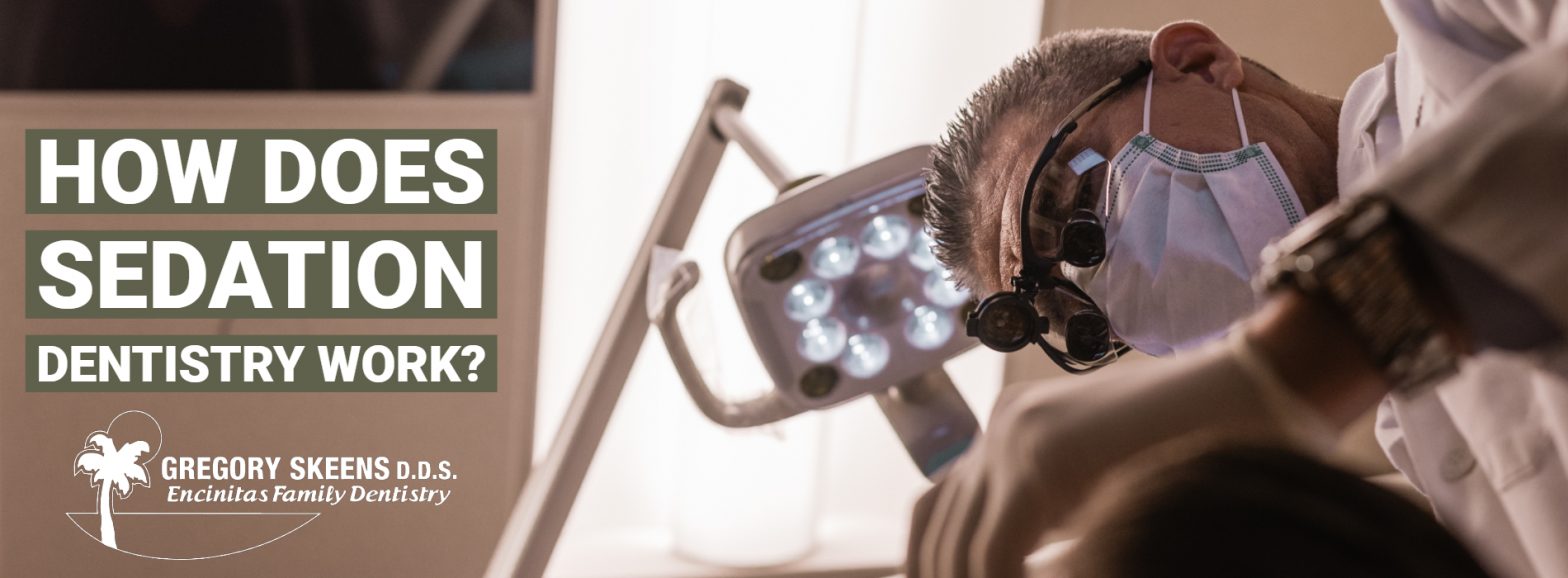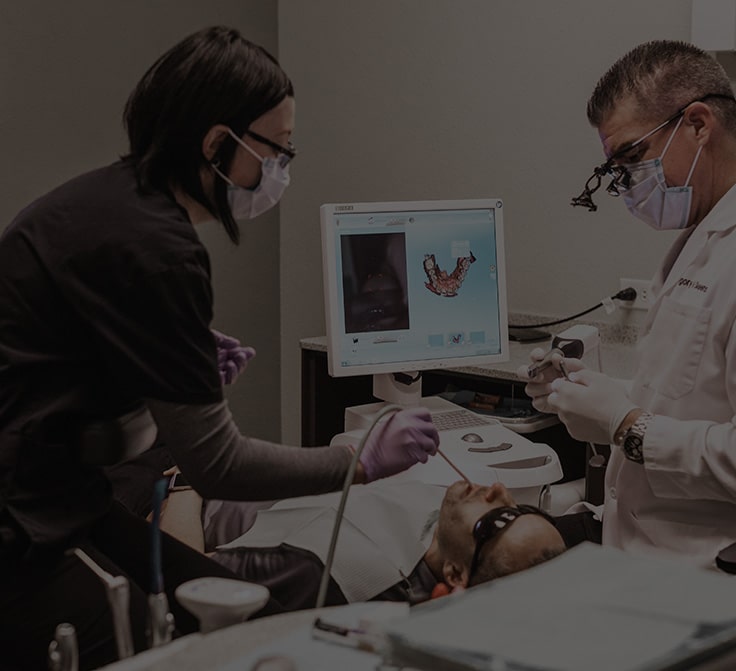
To be able to clean, sculpt, and sterilize teeth, dental professionals need to use complex equipment. Dentistry instruments can seem threatening and invasive to people who are already afraid of going to the dentist.
The good news is, some of these tools can actually be used to help alleviate your anxiety ahead of your next dental procedure.
What is Sedation Dentistry?
Sedation dentistry has emerged as a reliable solution for nervous patients. Basically, sedation or “sleep” dentistry is the practice of administering some kind of medicine to calm patients while keeping them conscious for a procedure.
Benefits of Sedation Dentistry
Sedation can dramatically improve the quality and speed of dental care, especially in patients who would otherwise be writhing around in their chairs. Many benefits arise for both patients and dentists alike when using sedation:
| Patient Benefits | Dental Professional Benefits |
| Less anxiety
Reduced pain Cheaper cost of care Improved dental hygiene |
Easier precision
More efficient treatment Faster operating time Happier patients |
Which Procedures Require Sedation?
Sedation can be offered to patients no matter what their procedure will be, ranging from intensive root canals to general teeth cleanings. Certain other risk factors might require the use of sedation before operating on a patient, including:
- Extreme tooth sensitivity
- Easily triggered gag reflex
- Overly anxious behavior
- Extensive dental work
Is Sedation Dentistry Expensive?
The cost of sedation will vary depending on the type of sedative you will need for your procedure. But generally speaking, sedatives are inexpensive and might even be covered by your dental insurance provider.
Types of Oral Sedation
The type of medicine used will depend on the level of fear demonstrated during an appointment, but many sedation options are available to squeamish patients:
Local Anesthetic
In order to make sure you won’t feel any pain in the area(s) of your mouth that require care, your dentist will inject a local anesthetic via your gumline. Novocaine is the most commonly used numbing agent for dental work, and numbness usually lasts a few hours after a procedure to help cope with residual pain or discomfort. Novocaine and other local anesthetics do not have the ability to resolve symptoms of anxiety or fear.
Nitrous Oxide (AKA “Laughing Gas”)
Commonly referred to as “laughing gas”, nitrous oxide can be delivered to patients through an oxygen mask. Laughing gas is metabolized very quickly, so the dose will likely need to be controlled by the dental hygienist until the dental service is complete. Nitrous oxide is very safe for children and adults alike, and there are minimal to no lasting side effects.
Prescription Medication
Before your dentist operates on you, you might be asked to take a pill to make you groggy. Halcion, a central nervous system depressant and hypnotic agent, is the most commonly used pill ahead of major dental procedures like root canals or deep drilling. Patients typically remain awake during the procedure after taking prescription medication, but they are much more relaxed and lethargic. It can take a few hours after leaving your dentist for the effects of Halcion to fade away.
Intravenous (IV) Sedation
IV sedation is less frequently used, but it can be a very effective sedative for patients who are exceptionally anxious. The sedative is emitted directly into the bloodstream while the dentist or dental assistant controls the dosage throughout the entirety of the procedure. The dosage will vary from patient to patient based on metabolic and psychological factors. IV administration usually leads to unconsciousness, but your dentist might try to prevent you from falling asleep.
General Anesthesia
General anesthesia, like all other sedation types, requires the consent of the patient before administration. This type of sedative is usually reserved for deeper and more complex procedures because it renders the patient completely unconscious. The sleepy side effects of general anesthesia usually last for a few hours, so patients who receive this form of sedation are advised not to drive or perform mechanical tasks after the dentist.
Is Sedation Dentistry Safe?
However, it’s important to recognize the potentially harmful side effects of sedatives , which usually arise after the completion of dental work. Fortunately, the following side effects are temporary and dissipate within a few hours:
- Amnesia (lack of memory or recollection)
- Confusion
- Feelings of disorientation
- Prolonged sleep
- Inability to respond to verbal cues
- Slowed heart rate
- Decreased blood pressure
- Lack of physical sensation
- Risk of falling or other injuries
- Exacerbated symptoms of depression
Not everyone is a good candidate for sedation dentistry, however. Patients who have underlying health problems may be particularly susceptible to the negative side effects of sedatives. People with the following conditions or risk factors should not be sedated:
- Sleep Apnea
- Obesity
- Seniority
- Infancy
- Metabolic stress
- Anemia
- Low blood pressure
As a patient, it’s your responsibility to notify your dentist whether or not you choose to be sedated in advance of a procedure. While sedation dentistry mainly benefits people with anxious dispositions, some patients prefer to undergo dental work without any form of anesthetic. Ultimately, it’s your choice whether to receive sedatives or not.
Learn More About Sedation Dentistry at Dr. Skeen’s Office…
Dr. Skeen and his team of trained dental professionals can answer any questions you might have if you are considering being sedated during your next visit. To book your visit at our Encinitas office, you can call us at (760) 944-9288, or send a text to (760) 933-3077. We’ll set you up with whatever care or information you may need.
¹ “Sedation Dentistry: Can You Really Relax in the Dentist’s Chair?” WebMD , WebMD, www.webmd.com/oral-health/sedation-dentistry-can-you-really-relax-in-the-dentists-chair#1 .
² Kelser, Erin Archer. “What Are Sedatives?” Stroke Center – EverydayHealth.com , Ziff Davis, LLC, 5 Aug. 2016, www.everydayhealth.com/sedatives/guide .
Gregory W. Skeens, DDS | 519 Encinitas Blvd Suite 104, Encinitas, CA 92024 | Phone: (760) 9







 LEARN MORE ABOUT OUR GUIDING PRINCIPLES AT ENCINITAS FAMILY DENTISTRY
At our core, Encinitas Dentistry is a dental practice devoted to restoring and enhancing the natural beauty of your smile. How we accomplish that goal is what makes us stand out. We mingle time-tested approaches to oral care with state-of-the-art technology and procedures to deliver beautiful, long-lasting smiles!
LEARN MORE ABOUT OUR GUIDING PRINCIPLES AT ENCINITAS FAMILY DENTISTRY
At our core, Encinitas Dentistry is a dental practice devoted to restoring and enhancing the natural beauty of your smile. How we accomplish that goal is what makes us stand out. We mingle time-tested approaches to oral care with state-of-the-art technology and procedures to deliver beautiful, long-lasting smiles!